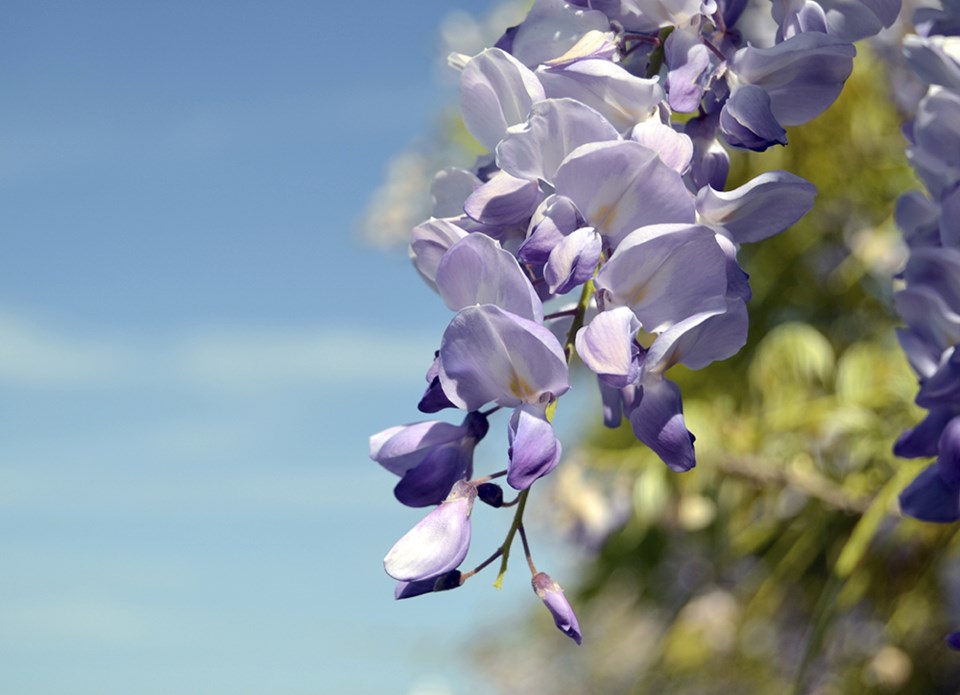Question: I have had a wisteria for several years that is full of leaves and looks very healthy. But it has only produced two flowers: one last year and one this year. Please advise.
Madeliene Quiban,
Coquitlam
Answer: A lot of people have problems with a wisteria failing to flower. Sometimes it’s just too young. Five to 12 years is the average wait before blooming time, but some take longer, especially if they’re grown from seed.
If you inherited the wisteria when you bought your home, the wisteria could be a seed-grown one, or perhaps a cutting from a seed-grown one. Besides not flowering for many years, seed-grown wisteria are erratic bloomers – an occasional one never flowers at all.
Sometimes people take a cutting from an old wisteria that’s full of flowers – but they don’t know how many years it took to get to that stage. Though cuttings usually flower faster than seed-grown wisteria, cuttings still need several years of vegetative growth to get started.
Wisteria is not the only plant that needs to focus on root and stem growth before flowering. Climbing hydrangeas also do this, and so does the shrub Wintersweet. But the fact that your wisteria has started flowering, even a little, is very hopeful.
But you can hurry your wisteria along a bit. High nitrogen fertilizer encourages plants to concentrate on leaves, and all this does is make more pruning for you. It does nothing to help flower development. High nitrogen fertilizer is best left for plants where leaves are the big attraction.
For wisteria, a high-phosphorous fertilizer is best because it encourages flowers. Wisteria should always be fertilized in fall (not spring). Wisterias like good drainage too. Could yours possibly be growing on soggy clay?
Regular pruning is essential to keep your wisteria from out-growing its support and to stimulate flower buds.
In late summer, cut back the new growth to five or six buds and tie any that you want to keep to your arbour. If the wisteria is getting close to the right flowering age, this pruning should result in flowers next year. The wisteria will keep growing through fall, so in winter you prune new growth back to five or six buds again, then in early spring cut back to two or three buds. This will make sure that any flowers are visible and not swamped by leaves.
Question: I have a south-facing sunny backyard where I can plant something in an old, heavy, cement dual laundry tub. Do roses, tulips, green onions and parsley require deep rooting?
Florence,
Burnaby
Answer: Tulips, green onions and parsley can easily be grown in a laundry tub. But roses are the plants that would really light up your backyard. Most patio roses are suitable for containers and the newer kinds flower all summer. The containers should be 18 inches or more in diameter. If your containers are smaller than that, you might try the larger type miniature roses.
The Flower Carpet series are estimated to grow about one metre tall and would be very suitable for your tub. They’re available in white, pink, red, yellow, coral or apple blossom. Frequent watering will be very important because planted containers dry out fast.
Anne Marrison is happy to answer garden questions. Send them to her via [email protected]. It helps if you add the name of your city or region.



